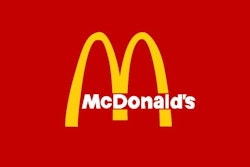This article originally appeared in the September print issue of IMPO Magazine. To view the digital version, click here.
Warner Electric, part of Altra Industrial Motion, has just completed the development of a modern 96,000 square-foot plant near Columbia City, IN. The world-class facility allowed Warner Electric to consolidate production activities from three different manufacturing and warehouse locations in the Midwest and allows for future production expansion.
But perhaps more importantly, this consolidation gave Warner Electric the opportunity to develop a state-of-the-art operation driven by lean operational principles using the same operational excellence techniques deployed by Altra manufacturing facilities across the globe.
Warner Electric is a global leader in the power transmission products industry with manufacturing facilities in North America, Europe and Asia.The new Columbia City plant will manufacture a variety of electromagnetic clutches and brakes, including PTO clutches and brakes for use on consumer and commercial lawn tractors, agriculture equipment and diesel engines.
Kaizen Sensei Helps Guide Plant Layout Process
The new plant provided an opportunity for a “clean sheet” facility layout. Several kaizen events were held during the summer of 2013 to establish the optimal equipment layout and material flow. The goal was to eliminate the wastes in movement, wait times and inventory throughout the entire production process. “We employed the services of a Toyota Production System sensei to assist us with this major undertaking,” says Ebling. “Teams of up to 15 members each were formed, representing all levels of employees, from production associates, material handlers and engineers to corporate executives.”
Each team began by mapping the current production processes of all products within two value streams. Cardboard cutouts of machines and equipment were used to experiment with plant layout variations. Each proposed variation was evaluated using lean techniques and measures including: • Enhanced safety and ergonomics.
- Optimized workflow.
- Minimized travel.
- Reduced inventory.
- Minimized footprint.
- Local point-of-use inventory storage.
“We also had a separate team evaluate raw material, finished goods inventory and material flow,” says Stan Owens, Warner Electric’s General Manager. “The team developed a logical plan for our stock locations and shipping area. They also specified a material delivery system employing unique material handling equipment and dedicated associates using standard work for the delivery of components and removal of finished goods from the assembly cells to maximize efficiency.”
All these planning activities were directly aligned with Altra’s “Operational Excellence” and “Total Associate Involvement” initiatives that focus improvement efforts on the critical processes that provide value to customers. Customer satisfaction ultimately translates to long-term, profitable growth for the company.
Improved Productivity Right from the Start
Optimized productivity begins immediately when raw materials are delivered to the plant receiving dock. All material receipts are initiated by an order to the supplier triggered by a kanban card from an empty container. Receiving and quality personnel, along with material handlers, all own and drive the process. Receipt transactions are executed within Altra’s business system (SAP), but all physical locations, quantities, containers, etc. are shown on the kanban card with enough information for anyone to fully execute the process.
Lean accounting techniques require inventory be at the lowest possible level. This is achieved through a very responsive supply chain that provides smaller, more frequent deliveries tracked electronically with minimal intervention and only one internal transaction. “Although we still have room for improvement, we have made great strides in this area. We are rapidly reducing our inventory footprint while minimizing internal transactions,” says Dan Heise, MagStop Value Stream Manager.
All raw material and finished goods at the plant are delivered and retrieved utilizing a unique tugger train system that cycles through the plant every two hours. Material handling associates are devoted to keeping production lines supplied with components. In order to reduce travel times, most materials are stored at the point-of-use, rather than a remote central location.
Enhanced Cell Manufacturing
Warner Electric’s highly trained workforce allows the company to assign multi-skilled associates (i.e.,CNC operator/ assembler) to work within each manufacturing cell. Cell Leaders support multiple cells for problem solving and continuous improvement.
These experienced associates are trained to solve problems and have the knowledge to quickly fix technical issues and overcome barriers to production flow as they arise. They also have the authority to stop production and reassign associates if necessary. Cell Leaders are also specially trained to identify opportunities to eliminate waste and are encouraged to make changes through team-based continuous improvement activities.
Work cells throughout the plant are ergonomically designed and arranged for enhanced worker comfort and improved productivity, eliminating wasteful movements and handling.For example, at the CNC machines in the cells, part trays are positioned for convenient access by operators. Roller conveyor systems are used where they eliminate lifting or handling in multi-station cells, allowing parts to move more quickly and easily between associates.
One of the key customer benefits of Warner’s lean manufacturing work cell configurations is the ability to ship product quickly in response to customer requested design changes.Other clutch/brake manufacturers often require six-month lead times.
“Quick changeover techniques have been implemented, making once difficult and time-consuming processes much easier and faster. These initiatives have yielded significant time savings – a typical changeover now takes 18 minutes versus 50 minutes a year ago,” says Heise.
Utilizing the Latest Manufacturing Technologies
Many “simple” but effective manufacturing technologies have been introduced to the new facility. An example is the use of “hanedashi,” a Japanese term for automatic unload of a work-piece from a machine or fixture after the cycle is complete.
“Hanedashi encourages manufacturing technologies to provide automation to remove a part from a process,” Heise explains. “This allows the associate to spend that valuable time loading the next part to the process and is a great ergonomic tool that reduces associate fatigue and minimizes repetitive motion injuries.”
As part of its commitment to efficiency and quality, Warner Electric has invested in five state-of-the-art, right-sized CNC machines, which were installed at the end of 2014. The new machines allow for faster part production with improved accuracy.
Customer shipping requirement dates are tracked at the assembly cell level so that everyone is aware of customer expectations. Significant effort is made to compile customer forecasts and a monthly sales/operations/planning meeting is held to review future needs based on a current forecast. The kanban card system does a great job of keeping components available for production.
Careful Planning Yields Positive Results
“Our new plant layout and continually improved production processes increases flow-through and productivity, as it reduces waste. This enables us to produce more product on shorter lead times,” says Ebling.
“An experienced and capable supply chain coupled with our visually managed material processes, enables purchased component availability under volatile customer demand. This allows us to respond to customers in hours rather than weeks,” he says.
“One of the most significant measures of our success can be found in our production ‘up-time’ and ‘productivity,’ both of which are up over 15 percent year over year.”























